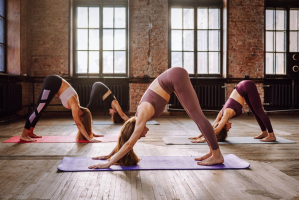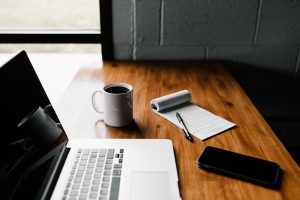Top 7 Tips for Building a Daily Meditation Practice
Have you ever tried to form a new habit or learn a new skill? You probably learned early on that consistent practice was essential to your success. That holds ... read more...true for meditation as well. It might be difficult to begin a regular meditation practice, but most individuals find it easier as they begin to notice some of the many advantages. Still, have reservations about incorporating meditation into your daily routine? It is entirely doable, and these seven tips for building a daily meditation practice will help you get started.
-
The first step in any meditation practice is to find a comfortable seat. A folded blanket, meditation bench, firm pillow, or bolster are all excellent options for meditation. Make sure your hips are at least four inches higher than your knees if you're sitting on the floor. This will keep your spine straight and alleviate any knee discomfort. Sit against a wall if you need back support. Alternatively, sit on a chair with your legs uncrossed and your feet on the ground. Whatever seat you choose, the goal is to sit comfortably with a tall, straight spine. Make sure you're at a comfortable temperature or have a blanket to keep you warm.
You've most likely seen photographs of people meditating in the traditional lotus pose. However, that position isn't comfortable for everyone, and it's difficult to mediate when you're physically uncomfortable.
Fortunately, you don't have to sit in a specific position to meditate well. Instead, simply choose a comfortable and natural position that you can hold. Both sitting on a chair and lying down are perfectly acceptable.
"Comfort is much more important than 'looking' like you’re meditating," says Bingham.
If sitting motionless is difficult for you, try meditating while walking or standing. Some people feel that focusing on each phase, like focusing on breath, helps them progress through the meditative process.
Consider creating a relaxing, peaceful meditation area, or perhaps forming a meditation ritual. Candles, soothing music, and images and mementos of loved ones can all aid to improve meditation.
“The benefits of the ritual are also important, as the process becomes a statement that your wellness matters,” Bingham asserts.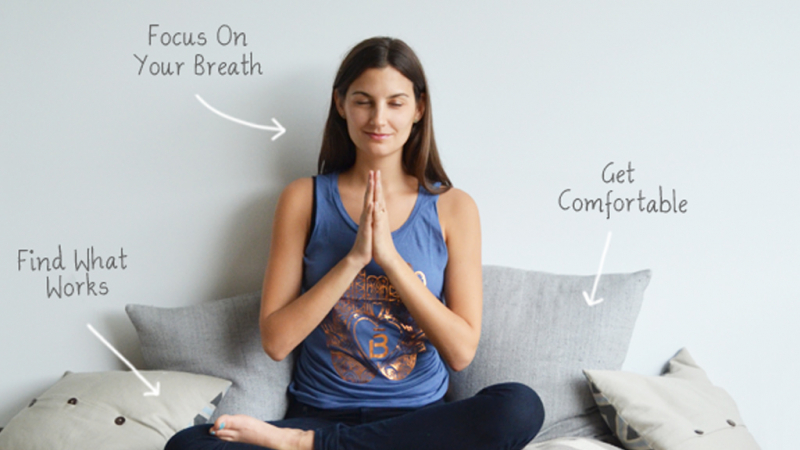
Barre3 Blog 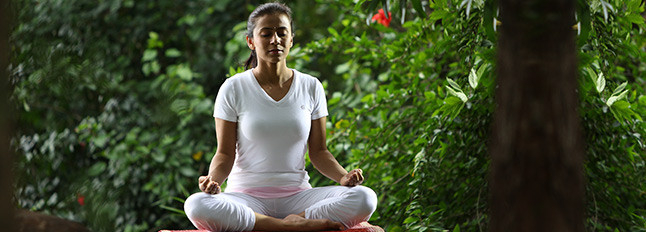
The Art of Living Foundation -
Routine is a terrific tool for training the mind, as we know from child development, and that's exactly what you're doing when you meditate. As a result, it's a good idea to meditate at the same time and place every day.
If you can, sit first thing in the morning, because your analytical left-brain mind's engines haven't started yet. Before you sit, don't check your phone or turn on any technology, so you can keep the mental space you obtained over the night.
You have the option of facing a full altar, a painting, or a solitary candle. It is not necessary for your area to be fancy; it simply has to be available. And there was silence.
You'll see that different publications suggest different "optimal" meditation times. In actuality, the best time to meditate is whenever you can make it work.
If you force yourself to meditate at a time that conflicts with your schedule and commitments, you'll likely become frustrated and discouraged to keep going.
Instead, experiment with different meditation times to determine what works best for you. That might be first thing in the morning, shortly before bedtime, during a hectic commute, or during a work break.
Try to stick to your schedule, whatever it is. Consistency will assist your new habit become ingrained in your daily life.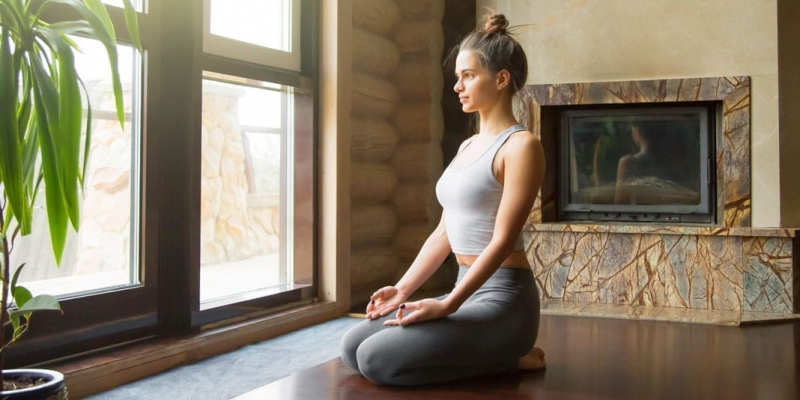
YouBeauty 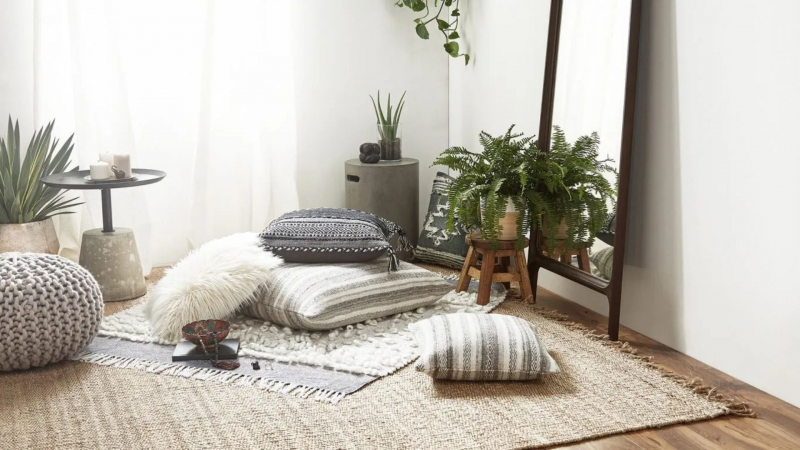
Architectural Digest India -
While regular meditation is a fantastic aim, you don't have to commit to 30 minutes (or more) every day. Three times a week, for five minutes. Beginners should start with five minutes of guided meditation three times a week, and gradually increase the minutes as meditation becomes a regular part of your routine, according to Bingham. You might not feel particularly mindful or peaceful at first. You might not be at all at ease. But that's all right. Make it a point to sit with your thoughts for five minutes every day. Be interested in them, but don't push it. "You'll eventually feel compelled to sit and meditate," Bingham says. Don't worry if you never have time to meditate for 30 minutes a day; even 10 or 15 minutes a day can help.
Use a timer to keep you from looking at the clock. You can increase one minute per day until you reach 30 minutes, or whatever time is long enough for your mind to begin to shift, each week. In terms of technique, I recommend giving each of these easy styles a week to discover which one works best for you:
- Pay attention to your breathing. While meditating, simply concentrate on your breathing. "Breathing in, breathing out" could be repeated in time with your in-and-out breath. This concentration technique teaches you how to concentrate on a single point.
- Simply take a seat. This Buddhist practice entails sitting quietly for a set amount of time and watching what comes and goes in the mind without attempting to control it.
- Examine your entire body. This technique is based on the Vipassana tradition of observing bodily sensations. "Itch in the nose," says the narrator. "I have cold hands." Sensations, like thoughts, come and go.
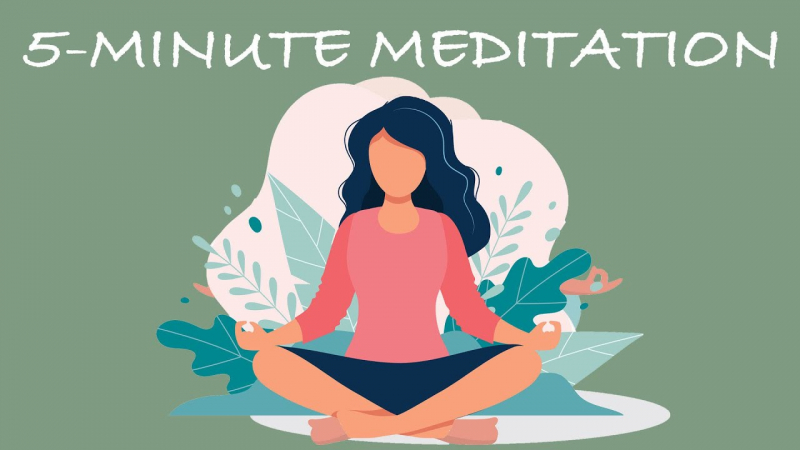
Goodful 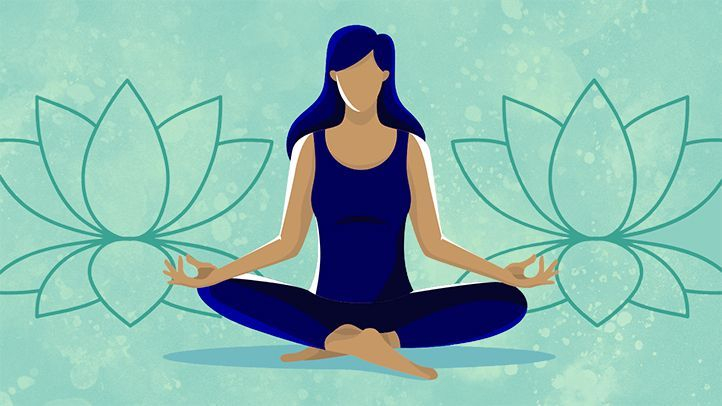
Everyday Health -
Are you still unsure how to meditate? If you're unsure, consult your smartphone. Most things these days have an app, and meditation is no exception.
Guided meditations, which Bingham recommends for beginners, can be found in a variety of apps, many of which are free. She continues, "A guided meditation can help bring the active mind back to the present moment."
Apps can also be used to access:
- meditations for different situations
- calming sounds
- breathing exercises
- podcasts
- tools and graphics to help you learn more about meditation
You may also customize the app to track your progress and adjust your meditation style based on your current mood. Calm, Headspace, and Ten Percent Happier are some of the most popular apps.

The New York Times 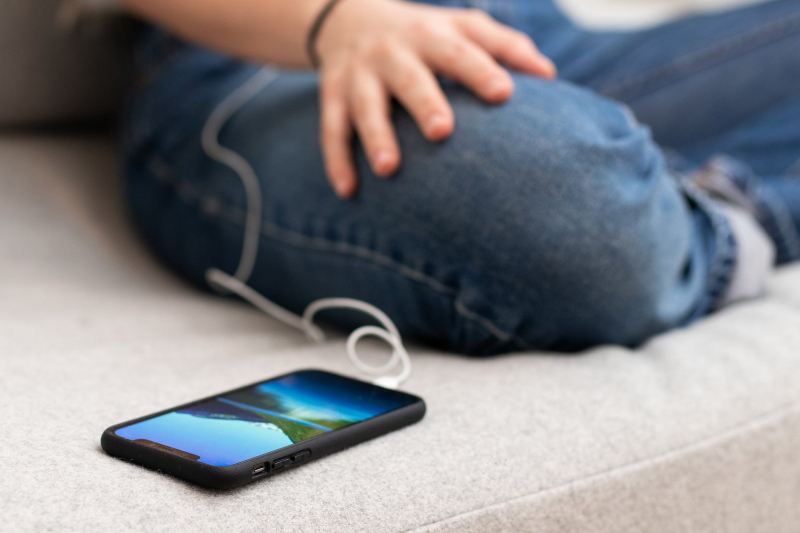
The New York Times -
Don't panic if meditation doesn't appear to click right away. It takes time to create a new habit. Instead of looking for excuses why you can't keep on, use curiosity and an open mind to investigate whatever challenges you're having. The difficulties you confront while meditation can help you improve your practice.
If you find yourself easily sidetracked, consider why. Are you feeling uneasy? Tired? Bored? Accept these feelings and make modifications as needed, they're providing you with crucial information. Try meditating in a different position or at a different time of day.
Bingham adds that practicing acceptance and inquiry in meditation might help you more easily adapt these feelings to your daily life.
This will make it easier for you to cultivate awareness on a regular basis.
Consider this: If you begin meditating when you are anxious or unhappy, you may find that you feel a little better. However, if you maintain a regular meditation practice, you may find it simpler to manage your stress before your emotions take control.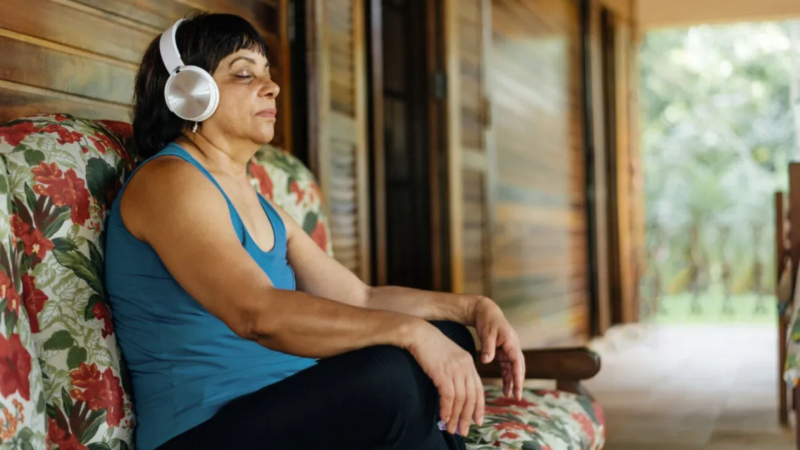
Healthline 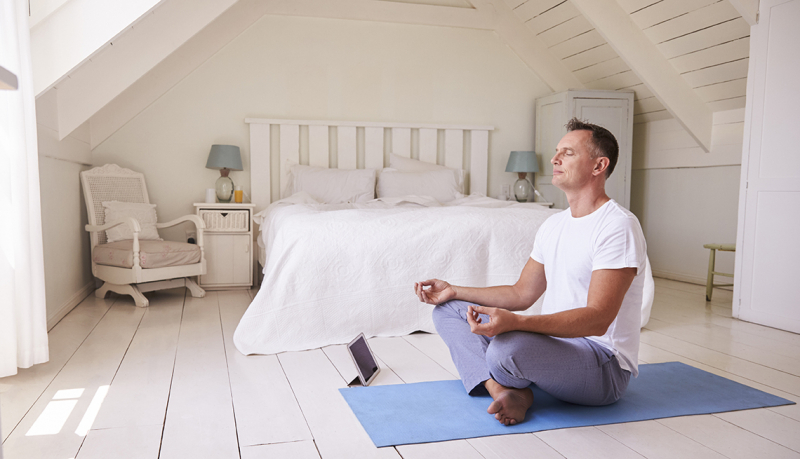
cdn.aarp.net -
It's possible that you won't realize the benefits of meditation right away. That is very typical. And no matter how long you've been training, your mind will inevitably stray. That's also very natural.
None of this implies that you won't be able to meditate successfully. Recognizing when your mind has wandered is a good thing since it shows you're becoming more conscious. Simply refocus yourself softly when this happens. You'll notice benefits over time if you maintain a consistent meditation practice.
However, it is critical to understand when meditation is more harmful than beneficial. Although many individuals find meditation to be beneficial, not everyone finds it to be so, even with frequent practice.
Although it isn't very frequent, some people do experience elevated symptoms of sadness, anxiety, or panic. If meditation makes you feel worse over time, you should get advice from a professional before continuing.
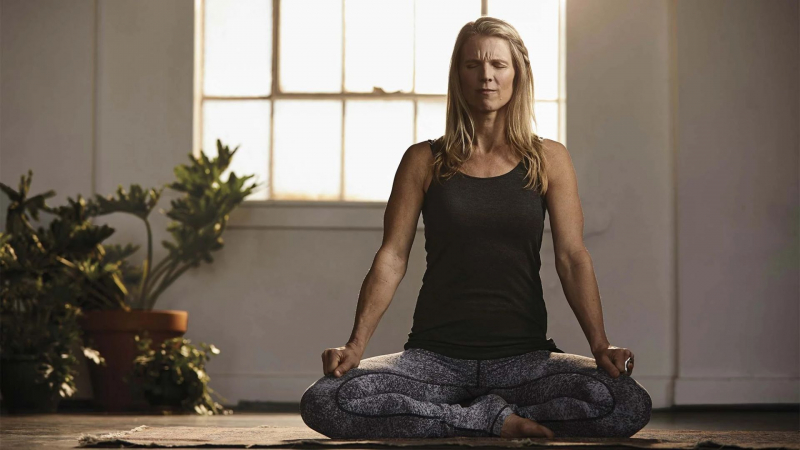
Yoga Journal 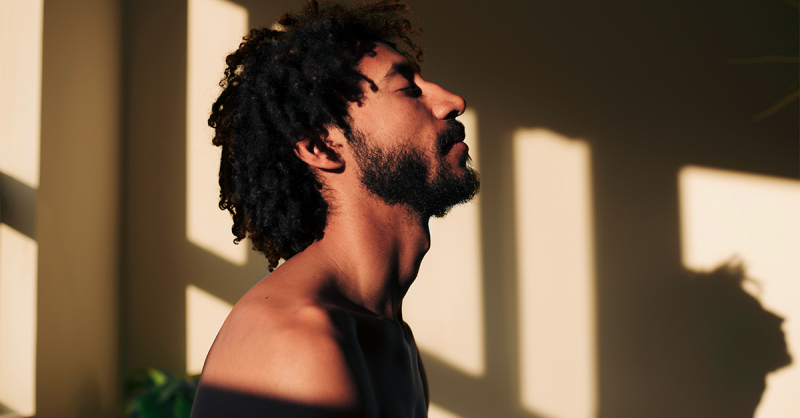
Psych Central -
Are you willing to give everyday meditation a try? To get you started, here's a basic meditation:
- Find a pleasant place to sit and unwind.
- Set a three- to a five-minute timer.
- Start by concentrating on your breathing. Take note of how each inhales and exhales feels. Slowly and deeply inhale and exhale in a manner that seems natural.
- When your mind wanders, identify the thoughts that arise, let them go, and restore your attention to your breathing. Don't worry if it happens again, it will.
- Open your eyes when your time is up. Pay attention to the environment, your body, and your emotions. It's possible that you'll feel differently, but it's also possible that you won't. But, with time, you'll undoubtedly realize that you're becoming more aware of both your personal experience and your surroundings. These sensations last long after you have finished meditating.
Are you ready to try something new? Learn more about different styles of meditation or try a body scan.
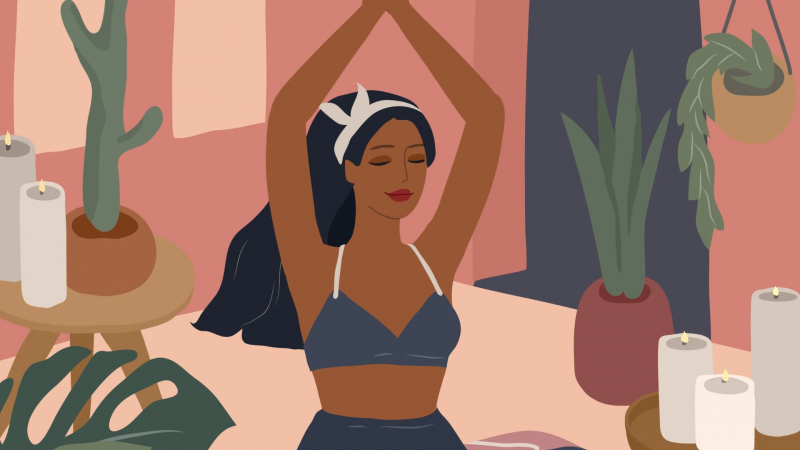
media.self.com 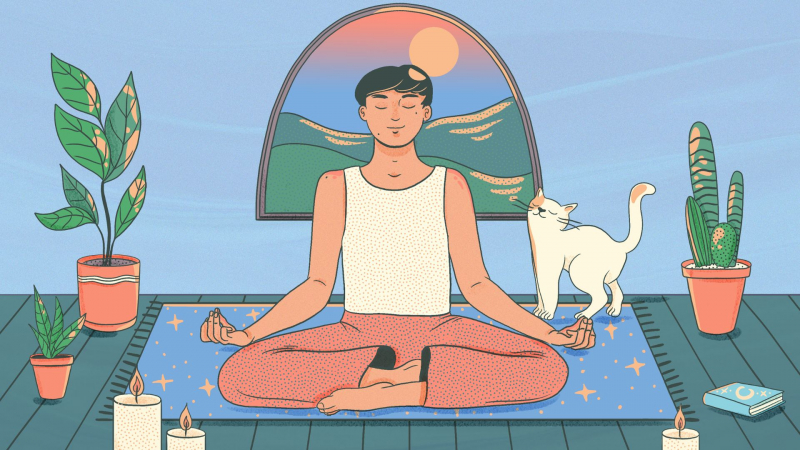
Verywell Mind





















